Why focus on foam surfboards?
Whatever your level, the foam surfboard deserves a place in your quiver!

Foam or resin, longboard or mini-mal? Choosing the right surfboard is essential if you want to begin, progress, and improve quickly. Read on for tips on how to find the best surfboard for your current and future style of surfing.
Surfing with the right board is important if you want to get out there and enjoy the waves, both quickly and safely. You should choose your surfboard based on three criteria: your skill level, body type, and the type of waves you want to surf. Follow these guidelines and you’ll be dropping in and catching bombs in no time!

Beginner surfer
You have just started surfing or only surf a few times a year. You tend to stay in shallower waters, where you can touch the bottom, and prefer to surf smaller or “broken” waves (where the barrel has turned white). You already love the feeling of catching a wave but you fall off frequently during your sessions (don’t forget, falling is learning!). We have designed a wide range of introductory surfboards to suit all body types, so that you can safely hone your skills and progress quickly.

Intermediate surfer
You surf regularly. During your sessions, you paddle out to the line-up and duck dive if you’re on a shortboard, or turtle roll on a longboard, to get out the back. You aim for waves less than 1 metre high; you take off successfully most of the time and you can follow the wave. You may do some pumping to generate speed or you’re beginning to work on more complicated manoeuvers. We have designed a range of boards to suit and advance your practice.

Advanced surfer
You surf frequently and regularly; for you, surfing isn’t just an activity, it’s a lifestyle. During your sessions, you paddle out to the line-up and dive or roll out the back confidently, whether on a shortboard or a longboard. You commit to waves over a metre high and you carve tight turns or sweeping lines. We have designed a range of boards to suit your intensive practice and your body type.
Whatever your level, the foam surfboard deserves a place in your quiver!
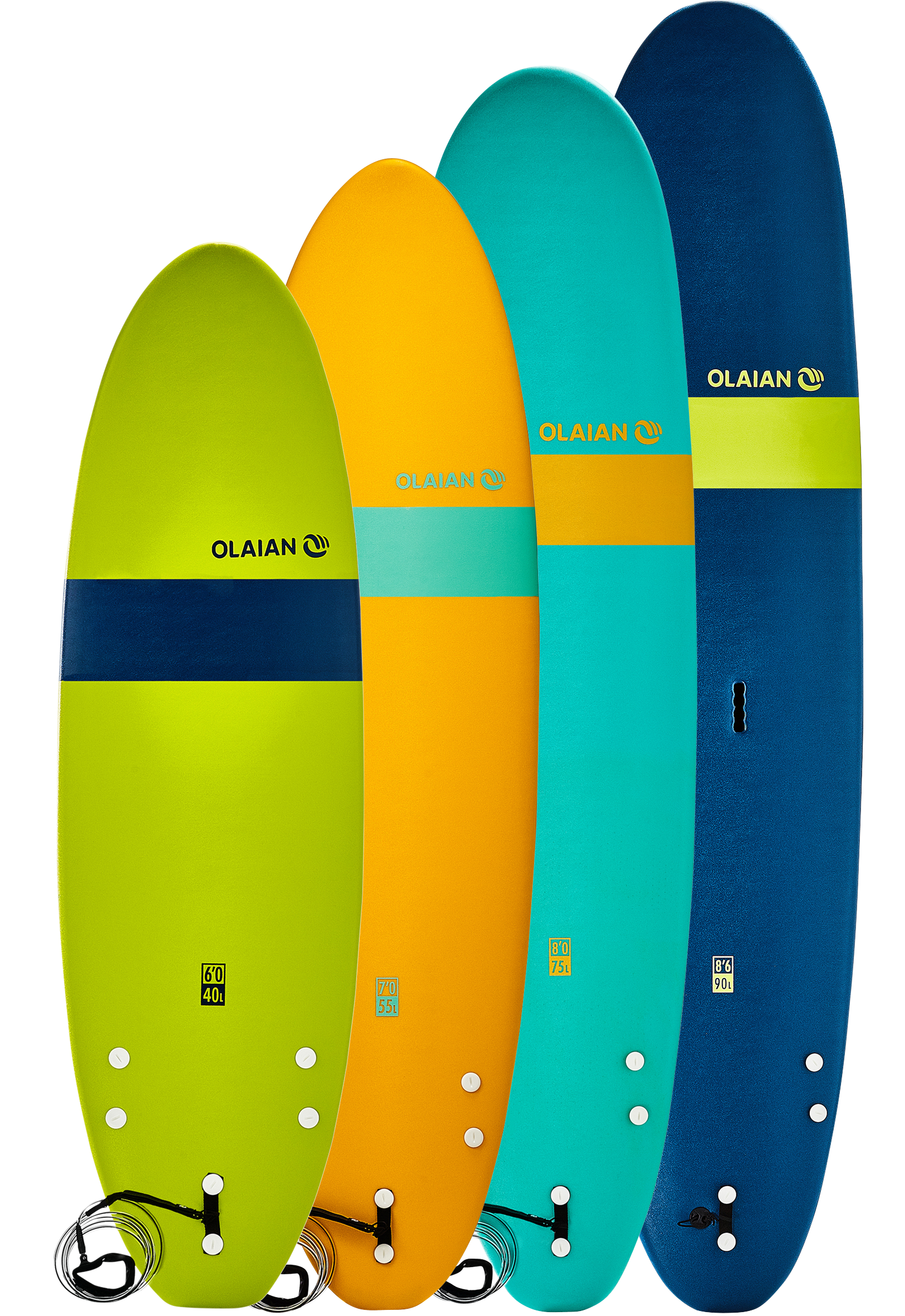
Our beginner foam surfboards
Beginner surfers, the foam surfboard is the one you need. It gives you the volume you need to paddle, to catch waves more easily, and to help you take off. Once you’re up on the board, it will help you keep your balance and is forgiving of the most common mistakes.
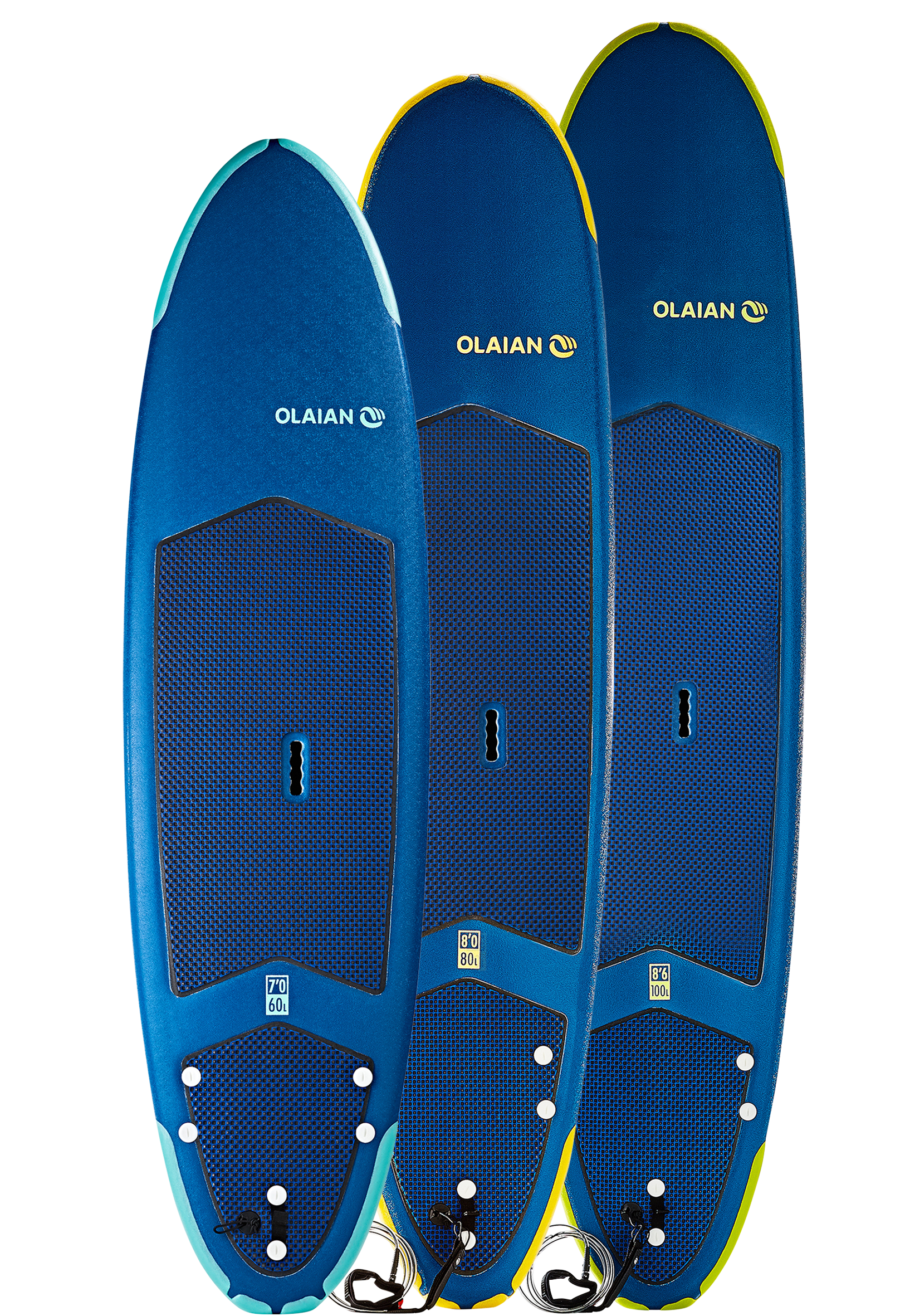
Our intermediate foam surfboards
Intermediate surfers, our foam surfboards are designed to accompany you as you progress in the sport. They let you travel across the wave, catch more hollow waves, and thereby gain speed, confidence, and capability.
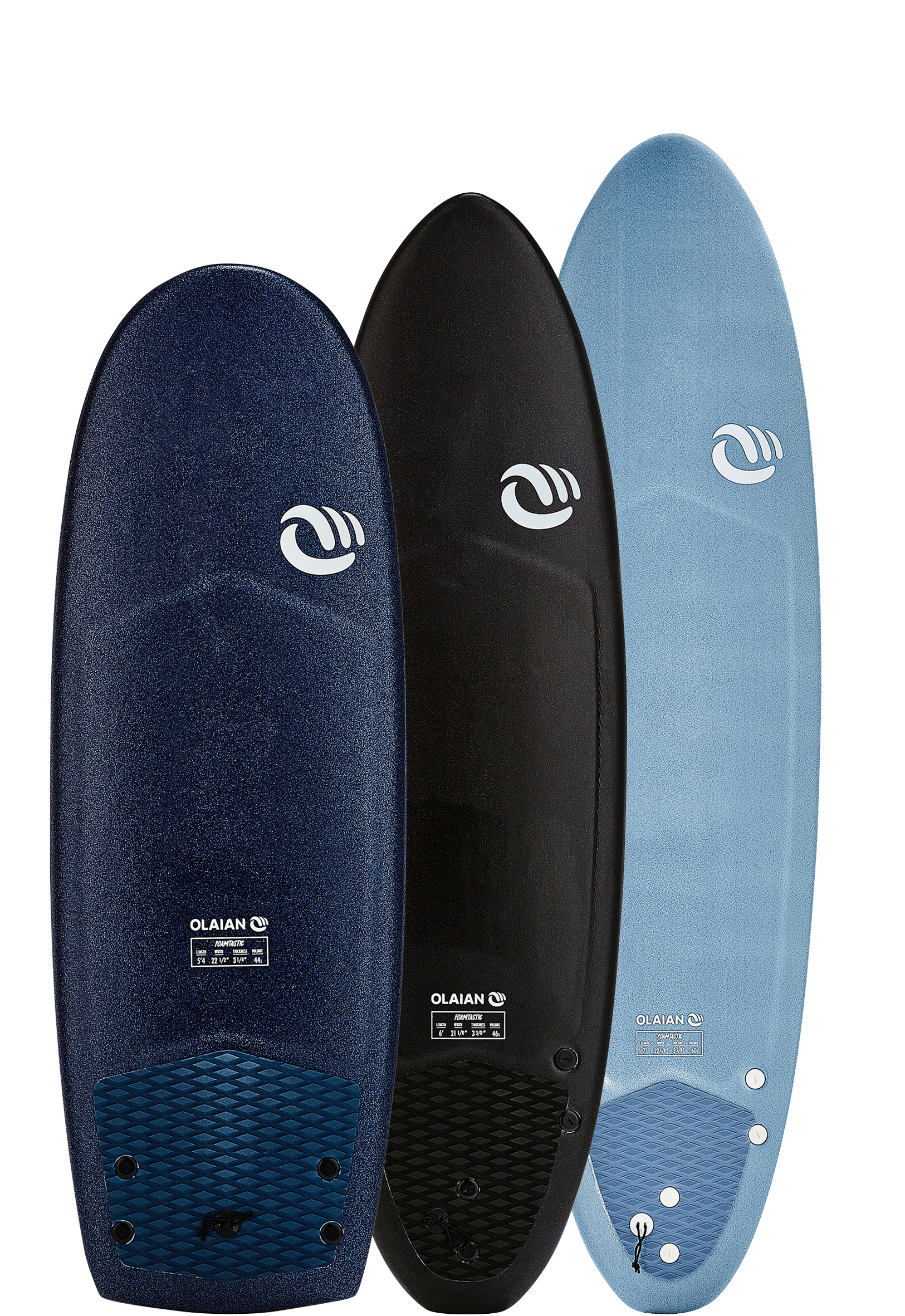
Our advanced foam surfboards
Advanced surfers, a foam surfboard gives you the opportunity to surf mushy summer waves and busy beach breaks without the risk of injuring other surfers or yourself.

Long-lasting
Foam is a soft and durable material that does not ding, split, or crack, which makes it a solid investment for riders of all skill levels.

Easy-to-use
A stable and accessible surfboard with plenty of volume makes it easy to paddle out to the waves and to catch smaller waves on mushy days.

Maximum safety
The foam absorbs shocks if you fall after a bad manoeuvre. It’s also a softer material than resin, which reduces the risk of injury if you, or someone else, is hit by the board.
When you’re new to surfing, it’s best to choose a board with plenty of volume. The more volume a board has, the easier it is to paddle and to gain speed once riding the wave. Large boards are especially buoyant and stable, which makes it easier for you to stand up on them once you catch the wave. The size of the board should be proportional to your weight and height. The heavier you are, the longer, wider, and thicker the board should be. Note that board dimensions are in feet (1 ft = 30.48 cm).
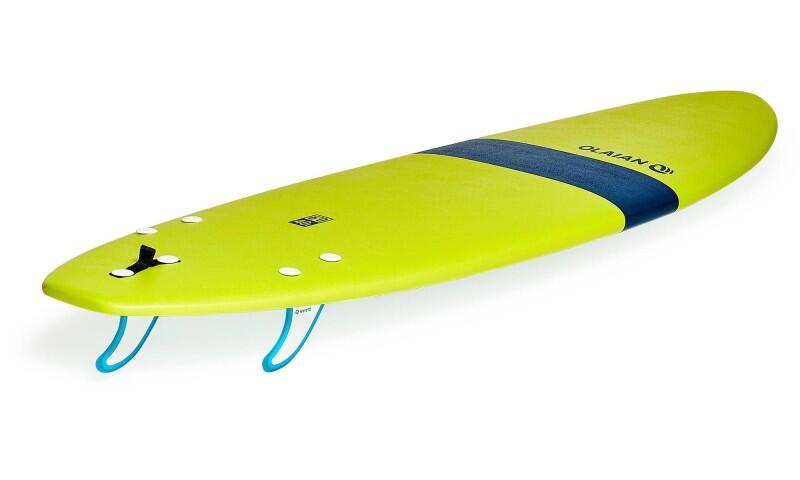
Less than 30 kg [less than 66 lbs]
We recommend the 6'0"
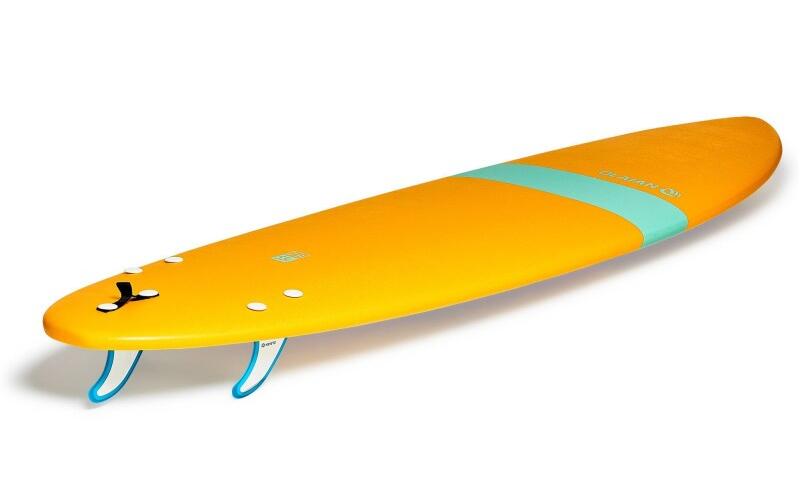
Between 30-40 kg [between 66-88 lbs]
We recommend the 7'0"
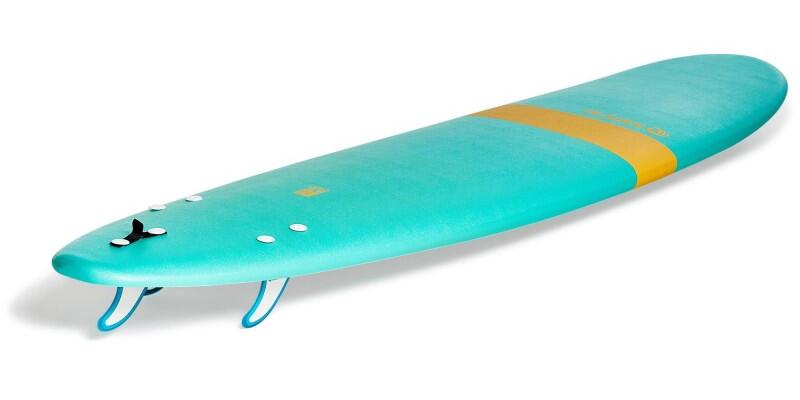
Between 40-65 kg [between 88-143 lbs]
We recommend the 8'0” board
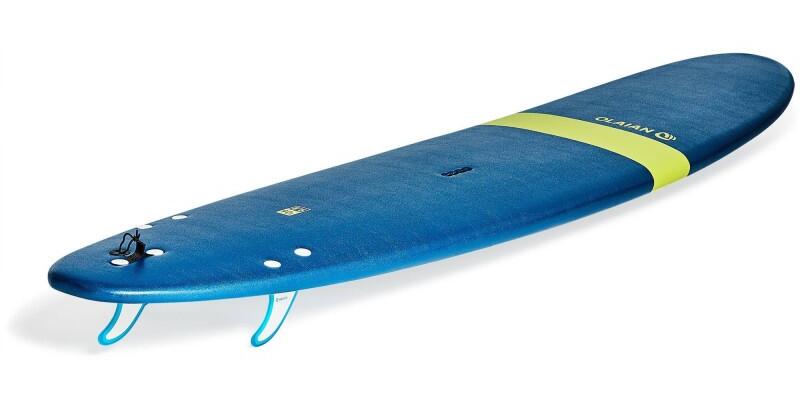
Between 65-85 kg [between 143-187 lbs]
We recommend the 8'6” board
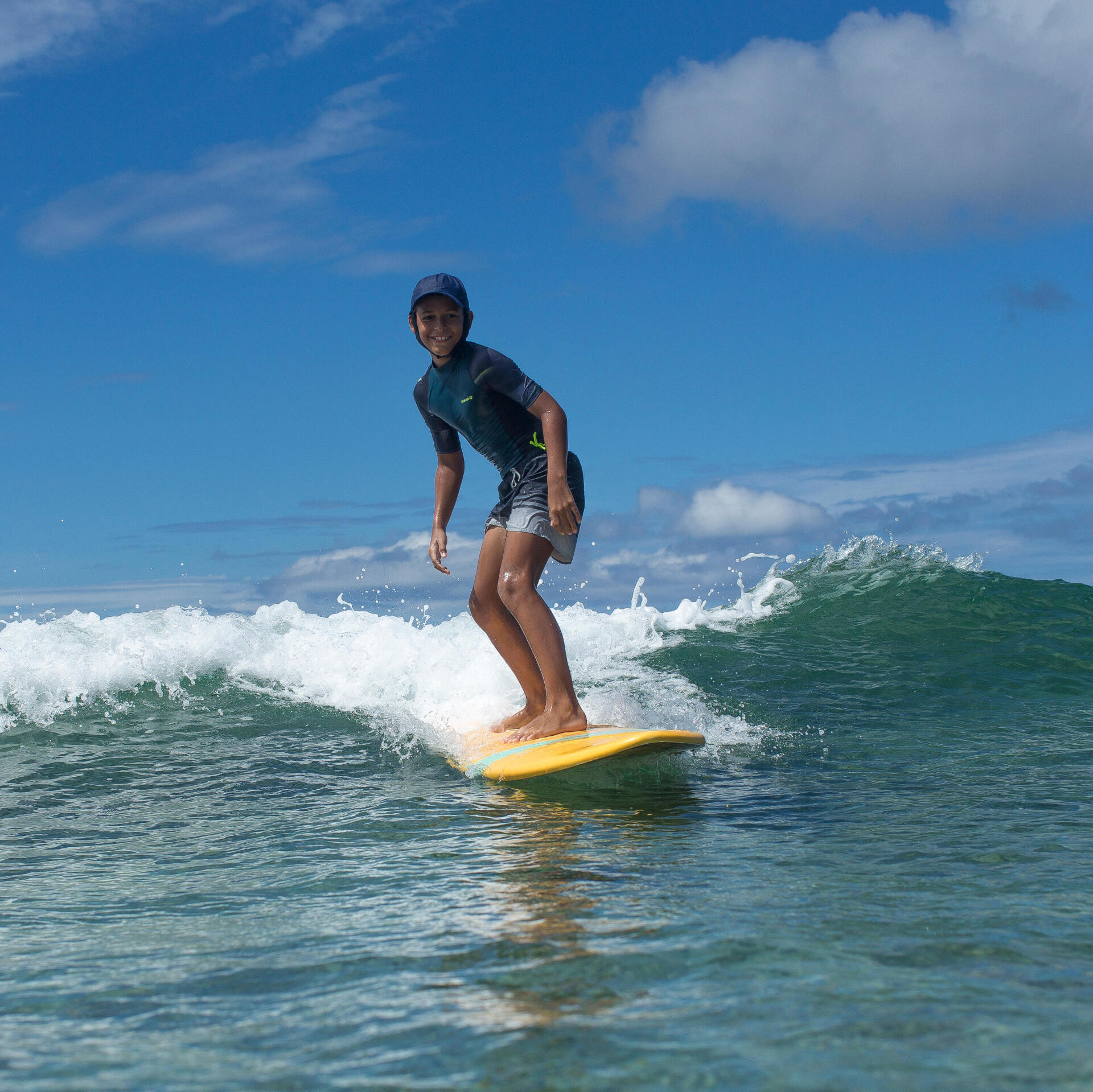
Broken waves
You are in the learning stage and prefer to ride the “white water” (broken water, or water where the wave has already crested and fallen). Our entire range of foam surfboards is appropriate for this type of surfing (keeping your body type in mind).
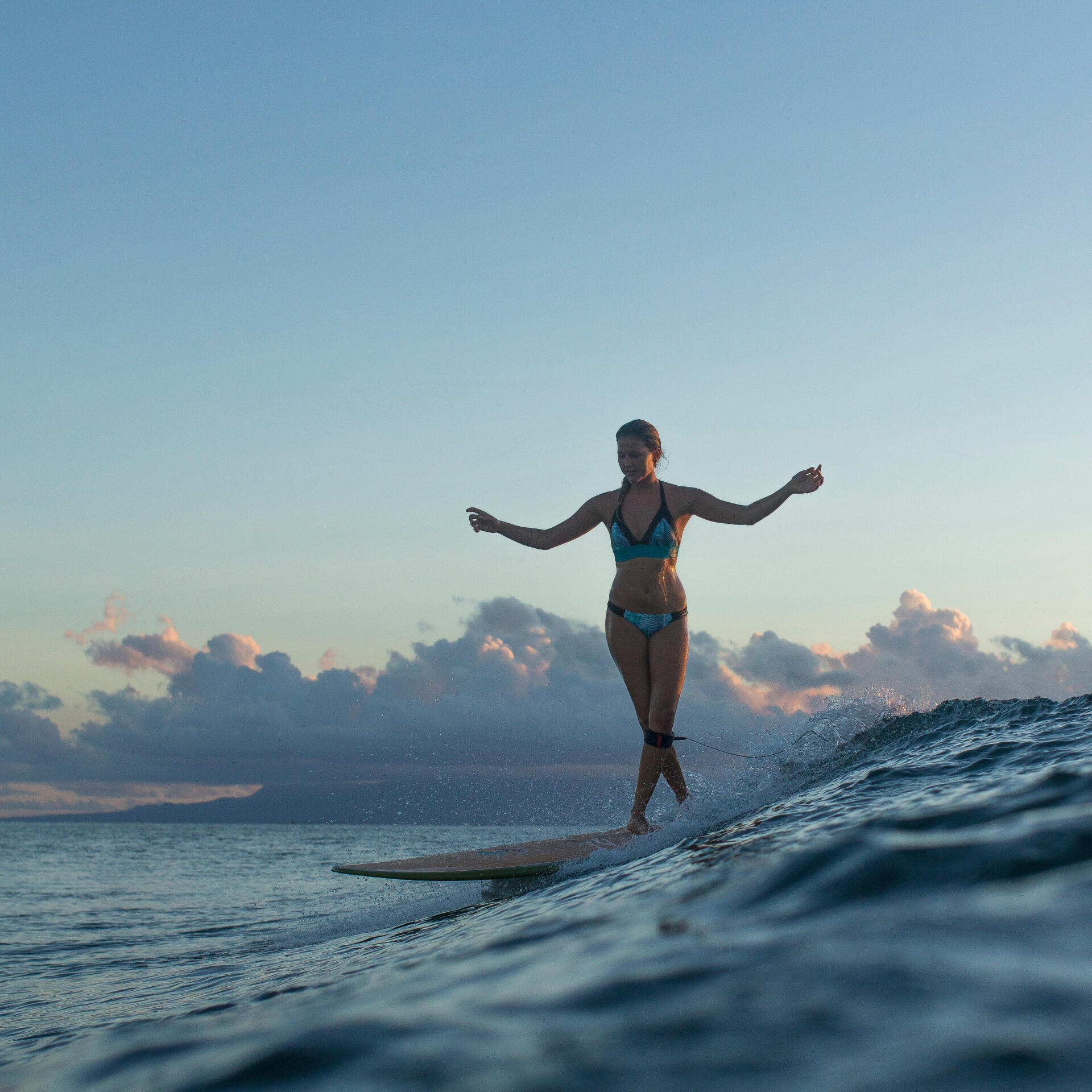
Mushy waves
Summer is often synonymous with small, less powerful waves, but that shouldn’t stop you from getting your board wet. Get yourself a mini-Malibu (“mini-mal”) or a longboard and catch every wave available, surf long lines, or even noseride!
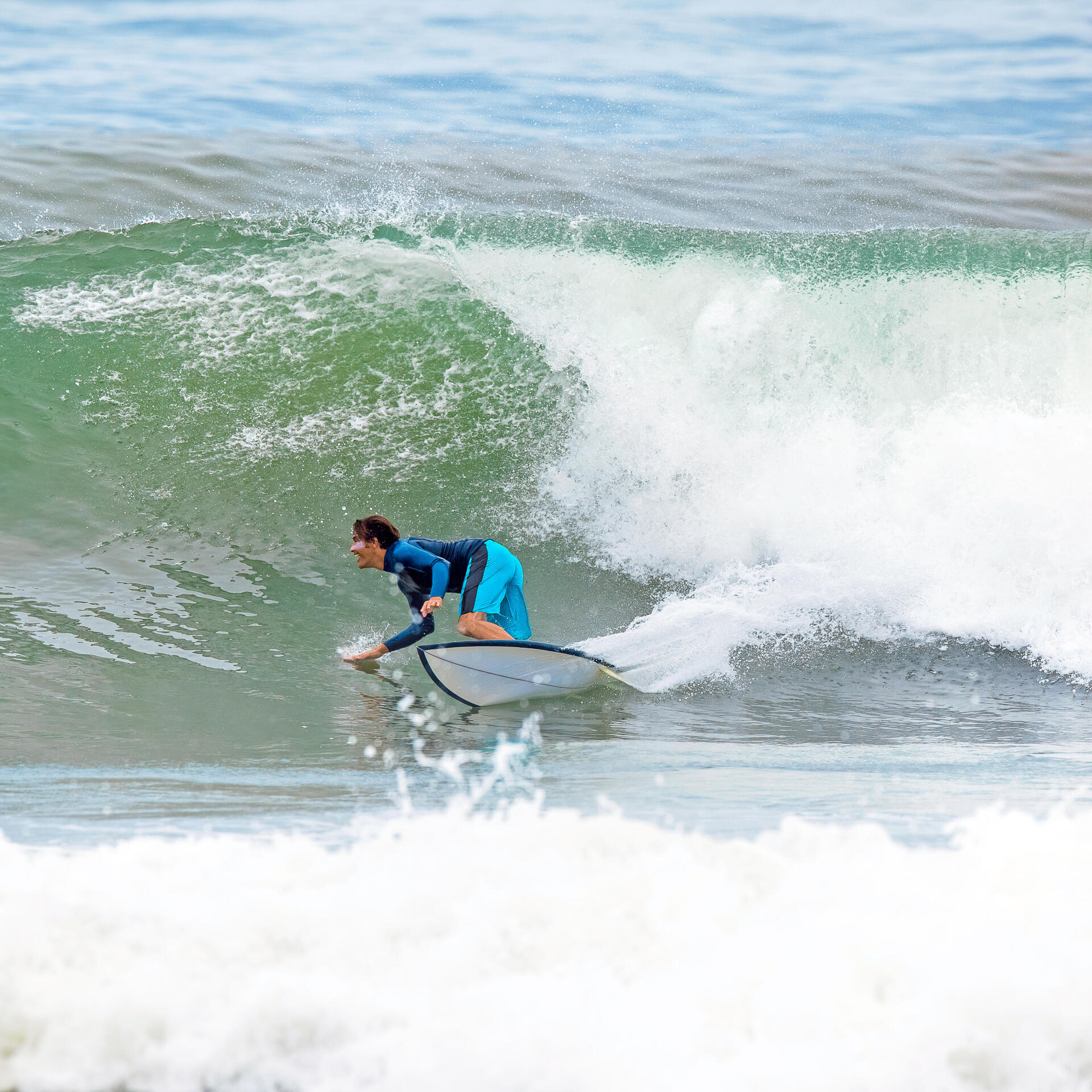
Hollow waves
Winter brings more serious conditions, with bigger and more hollow waves. In these conditions, it is best to choose a short and responsive board, like a shortboard. With quick maneuverability, it feels like a skateboard under your feet and is perfect for carving, riding barrels, and practicing tricks.
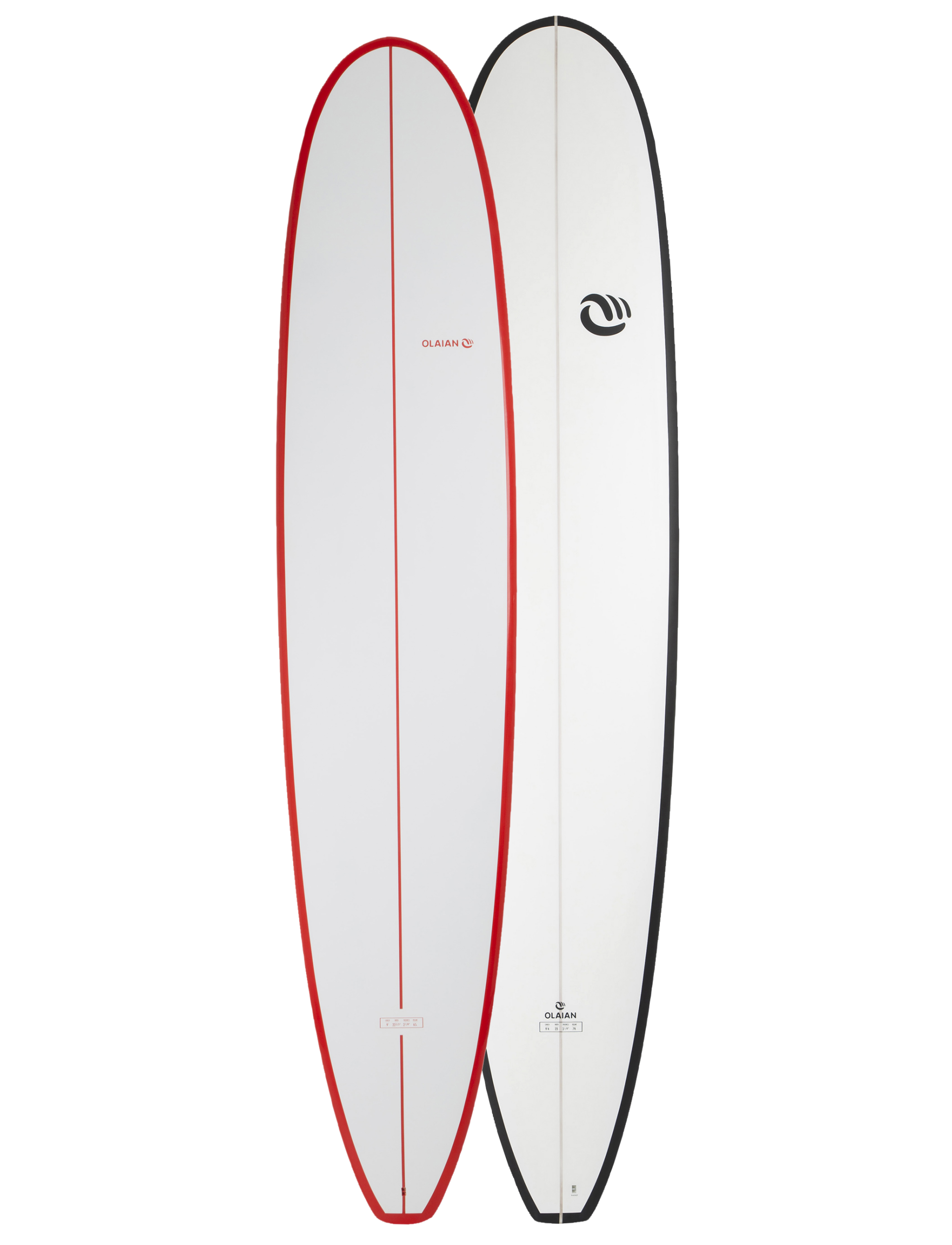
Longboards
This long, thick board is shaped for pure, unadulterated cruising! Its higher level of volume makes it much less demanding than a lighter shortboard, so you can surf smaller and less powerful waves. But don’t be fooled! The ease of a longboard still gives you plenty of opportunities to work on old-school manoeuvres, like hanging 10 and cross-stepping.
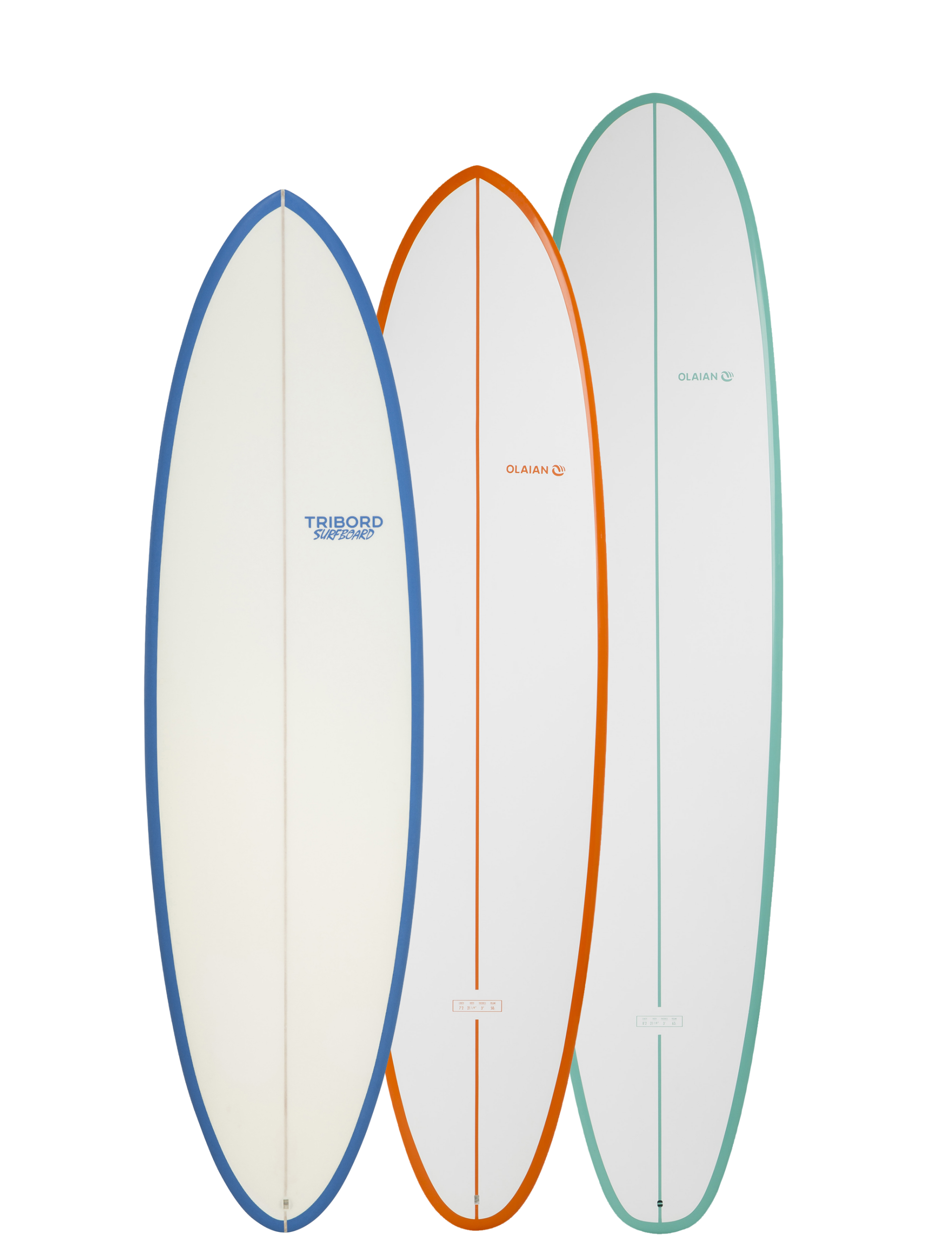
Egg / progressive / mini-malibu
These hybrid boards are the best of the longboard and shortboard worlds, which makes them ideal for intermediate surfers who prefer smaller conditions. Their mid-length body and lighter weight will progress with you as you build up confidence to catch hollow waves and improve your style and technique.
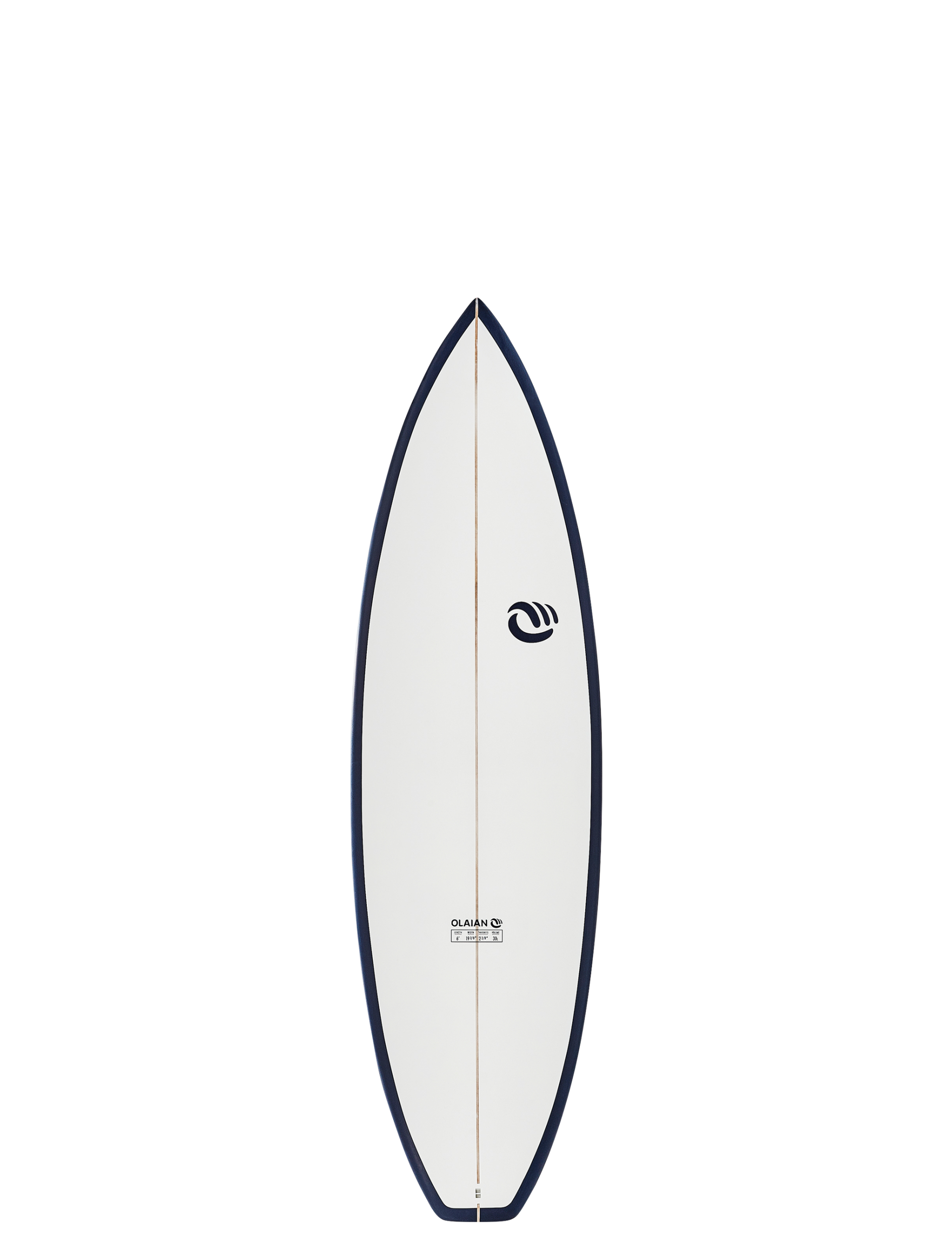
Shortboards
Narrow and short, the shortboard is one of the most popular surfboards on the beach. And for good reason! It’s easy to handle, which is great for duck diving and getting to the line-up without too much struggle. It lets you surf bigger and more powerful waves, generate speed, and perform more complex manoeuvres, like cutbacks and aerials. In return, this surfboard is also very demanding and is therefore suitable for more experienced and capable surfers.
Whether you’re new to riding the waves or you’re a seasoned pro, picking the right board for your next session is essential to enjoying your time in the water. Foam boards offer room to grow and develop new skills safely and quickly, while resin shortboards provide style and flair for those who have already put in their time in the water. Whichever board you pick, ride safe and stay stoked!